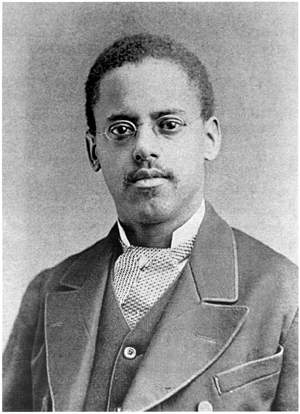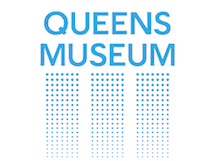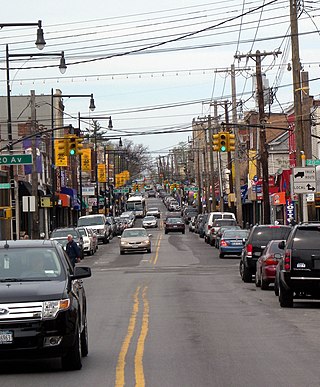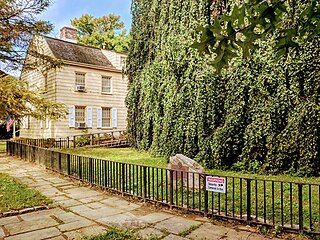
Flushing Meadows–Corona Park, often referred to as Flushing Meadows Park, or simply Flushing Meadows, is a public park in the northern part of Queens in New York City, New York, U.S. It is bounded by I-678 on the east, Grand Central Parkway on the west, Flushing Bay on the north, and Union Turnpike on the south. Flushing Meadows–Corona Park is the fourth-largest public park in New York City, with a total area of 897 acres (363 ha).

The Unisphere is a spherical stainless steel representation of the Earth at Flushing Meadows–Corona Park in the borough of Queens in New York City, New York, U.S. The globe was designed by Gilmore D. Clarke for the 1964 New York World's Fair. Commissioned to celebrate the beginning of the space age, the Unisphere was conceived and constructed as the theme symbol of the World's Fair. The theme of the World's Fair was "Peace Through Understanding", and the Unisphere represented the theme of global interdependence, being dedicated to "Man's Achievements on a Shrinking Globe in an Expanding Universe".

Flushing is a neighborhood in the north-central portion of the New York City borough of Queens. The neighborhood is the fourth-largest central business district in New York City. Downtown Flushing is a major commercial and retail area, and the intersection of Main Street and Roosevelt Avenue at its core is the third-busiest in New York City, behind Times Square and Herald Square.

Lewis Howard Latimer was an American inventor and patent draftsman. His inventions included an evaporative air conditioner, an improved process for manufacturing carbon filaments for light bulbs, and an improved toilet system for railroad cars. In 1884, he joined the Edison Electric Light Company where he worked as a draftsman. The Lewis H. Latimer House, his landmarked former residence, is located near the Latimer Projects at 34-41 137th Street in Flushing, Queens, New York City.

The Queens Museum is an art museum and educational center at Flushing Meadows–Corona Park in the borough of Queens in New York City, New York, U.S. Established in 1972, the museum has among its permanent exhibitions the Panorama of the City of New York, a room-sized scale model of the five boroughs originally built for the 1964 New York World's Fair. It also has a large archive of artifacts from both the 1939 and 1964 World's Fairs, a selection of which is on display. As of 2018, Queens Museum's director is Sally Tallant.

The Flushing Remonstrance was a 1657 petition to Director-General of New Netherland Peter Stuyvesant, in which some thirty residents of the small settlement at Flushing requested an exemption to his ban on Quaker worship. It is considered a precursor to the United States Constitution's provision on freedom of religion in the Bill of Rights.

Queens Botanical Garden is a botanical garden located at 43-50 Main Street in Flushing, Queens, New York City. The 39-acre (16 ha) site features rose, bee, herb, wedding, and perennial gardens; an arboretum; an art gallery; and a LEED-certified Visitor & Administration Building. Queens Botanical Garden is located on property owned by the City of New York, and is funded from several public and private sources. It is operated by Queens Botanical Garden Society, Inc.

Kew Gardens Hills is a neighborhood in the middle of the New York City borough of Queens. The borders are Flushing Meadows-Corona Park to the west, the Long Island Expressway to the north, Union Turnpike to the south, and Parsons Boulevard to the east.

College Point is a working-middle-class neighborhood in the New York City borough of Queens. It is bounded to the south by Whitestone Expressway and Flushing; to the east by 138th Street and Malba/Whitestone; to the north by the East River; and to the west by Flushing Bay. College Point is a mostly residential ethnically diverse community with some industrial areas. The neighborhood is served by several parks and contains two yacht clubs.
New York's 6th congressional district is a congressional district for the United States House of Representatives in New York City, located entirely within Queens. It is represented by Democrat Grace Meng. A plurality of the district's population is Asian-American, and a majority of its population is non-white.

The Flushing Friends Quaker Meeting House, also the Old Quaker Meeting House, is a historic Quaker house of worship located at 137-16 Northern Boulevard, in Flushing, Queens, New York. It was declared a National Historic Landmark in 1967 and a New York City designated landmark in 1970. Today, it still serves as a Quaker Meeting, with meetings for worship taking place every Sunday.

The Lewis H. Latimer House, also called the Latimer House or the Lewis Latimer House, is a historic house located at 34-41 137th Street in Flushing, Queens, New York City. It was constructed in the Queen Anne style of architecture between 1887 and 1889 by the Sexton family. It served as the home of the African-American inventor Lewis Howard Latimer from 1903 to 1928, and is now operated as a museum dedicated to the inventor's work. In addition, this museum-house also illuminated the life and achievements of other black scientists. The house remained property of the Latimer family until 1963. Currently, the Lewis H. Latimer House is owned by the New York City Department of Parks and Recreation, operated by the Lewis H. Latimer Fund, Inc., and is a member of the Historic House Trust.

Kingsland Homestead is an 18th-century house located in Flushing, Queens, New York City. It is the home of the remains of The Weeping Beech, a landmark weeping beech tree, believed to have been planted in 1847. The homestead is also close to the 17th-century Bowne House, the location of the first Quaker meeting place in New Amsterdam. The homestead is operated by the Queens Historical Society, whose quarters are inside; the homestead is open to the public as a museum. The Kingsland Homestead is a member of the Historic House Trust, and is both a New York City designated landmark and a National Register of Historic Places listing.

The Vander Ende–Onderdonk House, also known as the Van Nanda House, is a historic house at 1820 Flushing Avenue in Ridgewood, Queens, New York City. It is the oldest Dutch Colonial stone house in New York City.

The Free Synagogue of Flushing is a Reform Jewish congregation and historic synagogue located at 41-60 Kissena Boulevard in the Flushing neighborhood of Queens in New York City, New York, United States. The synagogue's establishment is based on the free synagogue movement, started by Stephen Samuel Wise. The building was added to the National Register of Historic Places in 2009.

Kissena Creek is a buried stream located in the neighborhoods of Flushing, Fresh Meadows, Hillcrest, and Kew Gardens Hills in the New York City borough of Queens. Kissena Creek originates in a now-filled swamp within Kew Gardens Hills and Pomonok in central Queens, flowing east to Hillcrest. The creek then travels mostly north and west, largely flowing beneath Kissena Park Golf Course, Kissena Park, Kissena Corridor Park, and Queens Botanical Garden, before merging with the Flushing River in Flushing Meadows–Corona Park.

The Weeping Beech was a historic tree located at Weeping Beech Park in Flushing, Queens, New York City. It was the mother of all European weeping beeches in the United States.
Jane Haines was a Quaker educational reformer, horticulturalist, and rosarian from Flushing, Queens, New York.






















